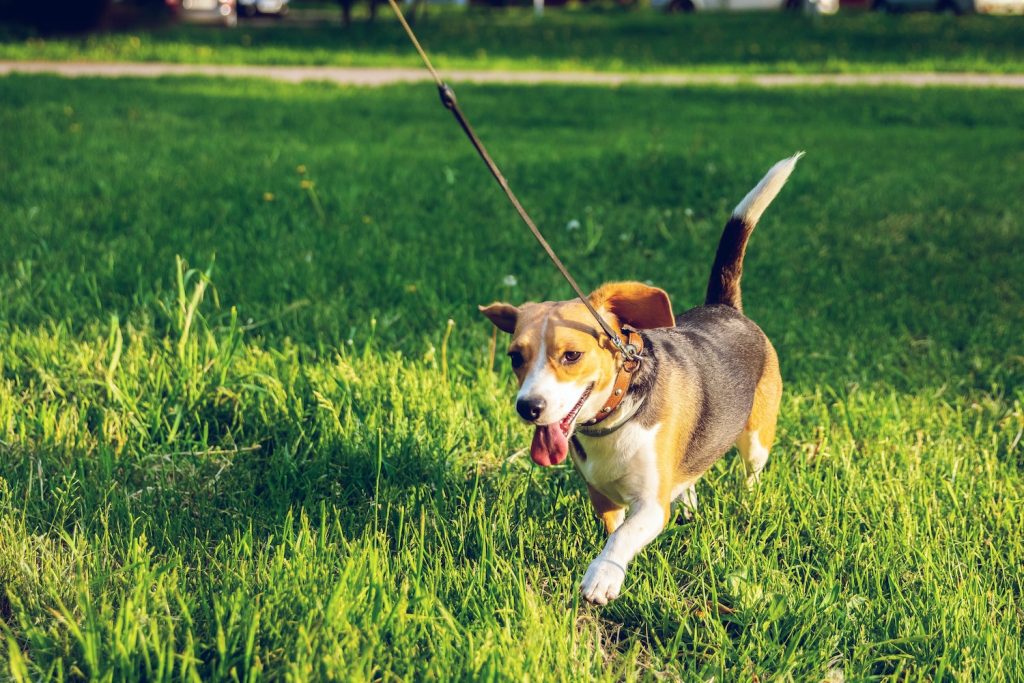
We all love our pets and want to do the best we can for them. Every pet owner wants to ensure that their pets are happy and healthy.
It’s more than just ensuring that your pet has a full bowl, or walking the dog and cleaning the litterbox.
We have created a list of must-dos for pet care that owners can use to become the best pet parents possible.
Spend Time Training Your Dog
To be a canine pet owner, you must take responsibility for your dog’s training.
The responsibility of dog training for pet owners is ongoing. Dogs are not born knowing the way we want them to act, so training is necessary.
It is important to train your dog in obedience. This will not only help instill good manners in them, but also keep them happy, healthy, and safe.
Todd says that teaching a dog how to respond when called can be very important. It will prevent them from running off or getting lost. You can train your dog to cope with situations, such as going to the veterinarian, which they may find frightening.
Your pup will also benefit from mental and physical stimulation through dog training. Todd says, “Training your dog with positive reinforcement can be a great way to stimulate their brain.” You’ll reward and praise them for completing the cue.
You should include dog training in your daily schedule as a pet owner. You can help your pet’s manners by creating habits such as making them sit down before they are fed or waiting for you to pass through a doorway instead of them bolting through.
Enjoy Engaging Playtime

It is important to play with your pet in order to strengthen the relationship between you two. You can establish a positive and fun relationship with your dog while giving them a way to release their energy.
Shermaine Cox, DVM is an Atlanta-based veterinarian who says that play helps pets avoid getting bored and frustrated, as well as developing behavioral problems.
You should spend time each day playing actively with your pet as a responsible owner. As a responsible pet owner, you should spend time each day actively playing with your pet.
You will need to experiment with different toys until you find the one that your pet enjoys. You will need to try out different cat or dog toys until you discover what your pet likes.
Walk your dog every day
Walking your dog is an essential part of his exercise routine and socialization. You must be able to dedicate time each day for your dog’s daily walk.
The dog determines how frequently and for how long to walk. Some dogs may enjoy going for short walks but then return to their home. Others may require longer runs in order to exhaust all of their energy. Todd says that for dogs who are more energetic, adding games like fetch to their routine can help. Other activities include agility or dock diving, as well as nose work.
When planning an outdoor walk with your dog, it is important to use a leash. This leash not only helps keep your pet safe, but it also allows other dog owners to take their dogs on walks without having to worry about the dog coming up without permission.
It is also important to give your dog some time off-leash. Todd says that it’s important for dogs to have some time off-leash, for both the exercise they get and the freedom to do what they want.
You need to ensure that the off-leash period takes place in an environment where it is safe and secure. Todd says because there are leash laws in different places, it is important to choose a location where your dog can run around.
You can take them to the dog beach, dog park or a trail where dogs are allowed. Remember to respect other dog owners. Do not assume your pet can approach another dog without their permission.
It’s important that your dog knows how to follow cues and come back when it is off the leash.
Cleaning up after Your pet

You are responsible as a pet owner for the mess your animal makes.
Always have dog bags with you when walking your pup. This will allow you to clean up the mess that he may leave behind, whether it’s on the street or on a neighboring lawn. There are many dog bag dispensers that you can attach directly to the leash of your pet.
Cleaning up after your pet can be a very important responsibility for pet parents. It not only keeps the walkways and streets clean but also helps prevent disease.
A responsible cat owner will always clean the litter box every day.
Use a natural litter that is unscented to simulate the soil or sand that cats would use in nature to bury their waste. Dr. Carlson states that “scented cat litter are designed for us to use, and not the cats.” Natural litters are deodorizers that can reduce bacteria. A litter box is a common place for bacteria to produce odors.
Todd says that the litter box must be cleaned and replenished with new litter every week. He also has a Feline Behaviour Certificate from International Cat Care.
Todd says, “[When you clean,] choose a product that’s safe for your pets and doesn’t have an offensive smell. Cats might not like it.”
Make sure your pet is well-groomed
As a responsible owner, you should make sure that your pet has a well-groomed coat. A well-groomed dog is healthy, from their coats to their nails.
Pets need to be washed regularly with products that have been specially formulated for them. Follow the directions on the packaging and thoroughly rinse your pet’s skin and fur,” advises Dr. Cox. The ear cleaner should be approved for dogs and cats. “Regular ear cleaning prevents the accumulation of dirt and debris which could lead to an ear infection.”
Do not use cotton swabs for cleaning your pets’ ears. Ask your vet to demonstrate the correct way before you try it yourself.
Your pet’s coat and their normal activities will determine how often they need to be bathed. Consult your vet to determine the most appropriate bathing schedule for your pet.
It is important to brush your pet. Brushing the coat of your pet several times per week can help prevent it from mattifying and remove any dead hair or allergens, says Dr. Cox.
Check your pet’s nail length regularly to ensure they remain healthy. As a vet, Dr. Carlson says: “Overgrown nails are among the first things that I notice.”
Your pet can suffer from a great deal of discomfort and pain if their nails are overgrown. Overgrown nails are a problem throughout the entire body. This is especially true for the hips and back. The feet of a dog that is in pain are my first concern. “Nail trimmings must be done evenly. I don’t just focus on the nails, but also the position of the animal and the way it moves following the trim.”
Your veterinarian is always available to assist you if your pet doesn’t tolerate having their nails cut.
Make Microchipping Your Pet Nonnegotiable

You should do everything you can to ensure that your pet’s identity is clearly visible. There are many ways to help your pet not get lost. From GPS tracking devices to ID tags attached to their collars, you have a number of options.
No matter how well you care for your pets, there’s still the possibility that they could become lost. This is an alarmingly frequent occurrence. While collars, GPS devices, and tags can all be useful, a microchip is the most effective and permanent solution to protect your pet in case it gets lost.
Dr. Cox says, “Unfortunately one-third of pets lose their way in the course of their lives.” Although pets wear tags and collars, they can come off. Microchips for pets are an additional layer of security to help you find your lost pet.
A microchip for your pet dramatically increases the chances of being reunited with it if they get lost. According to Dr. Cox, dogs with microchips have a greater chance of being returned to their owners. Microchipped cats also have a higher likelihood.
If your cat or dog is not already microchipped then do what’s right and have it done as soon as possible.
Routine Checkups at the Veterinarian
You are responsible for the health of your pet, including regular veterinary treatment.
The veterinarian will be able to treat problems early if they arise if you visit regularly.
How often should you see a veterinarian? Dr. Cox says that adult dogs and cats need to see their veterinarian every year for a complete comprehensive exam and bloodwork.
It is advised that you make an appointment with your vet every six months if you own a senior cat or dog. According to Dr. Carlson, senior dogs, and cats should be examined biannually. The lifespan of pets can be extended by several years in a period of six months, compared with humans.
While annual vet visits are important, they’re not the only reason you should schedule a meeting with your veterinarian. According to Dr. Cox, “In addition to regular physical examinations, adult dogs may require yearly vaccinations based on their age, lifestyle, region, and health concerns.
Maintain Your pet’s dental care

As a responsible owner, it is important to take care of your pet’s dental health.
Periodontal disease can be caused by neglecting the oral health of your pets. This puts not only their health at risk but also their general health.
According to Dr. Cox, “Periodontal diseases are caused by an infection in the soft tissues and bones surrounding the teeth.”
According to Dr. Cox once surrounding tissues and bones are compromised teeth can begin to loosen. Compromise tissue and bones are at risk of infection by bacteria, which could put your pet’s heart, lungs, liver, and kidneys at risk.
Schedule annual dental cleanings for your pets with your veterinarian. According to Dr. Cox, “dental cleanings performed under general anesthesia have many benefits.”
They allow the vet to do a complete oral exam, which is otherwise difficult when the animal is awake. A veterinarian can examine the mouth for oral masses, loose or broken teeth, foreign objects, gingivitis, and tooth fractures. “A thorough cleaning of the teeth will also help to prevent periodontal diseases, gum disease, bad breath and tartar accumulation,” states Dr. Cox.
Regular brushing can help keep the teeth and gums of your pet healthier between dental cleanings. In addition to yearly cleanings, pet owners can brush their dogs’ or cats’ teeth three times per week using a specially-formulated toothpaste for dogs or cat.
Use cat or dog dental treats between brushings to fight dental disease, says Dr. Cox.
Keep them safe from fleas, ticks and heartworms
It is essential to take care of the general health of your pets, to be aware of common health threats and to ensure that you are taking all necessary precautions to keep them safe.
Fleas and Ticks

Fleas and ticks can be found in pets. “If fleas are not treated, they can cause itching, hair fall, and flea allergy dermatitis (an allergic reaction that causes redness and swelling of the skin), as well as secondary infections, tapeworms, and severe anemia,” says Cox.
Even more dangerous are ticks. Ticks can transmit viral, bacterial and protozoal diseases. Lyme, Rocky Mountain Spotted Fever and Ehriosis are examples of tick-borne vector diseases. If not diagnosed and treated properly, these diseases can cause your pet to become very sick,” says Dr. Cox.
It’s easy to protect your dog from ticks and fleas. There are many products available over-the-counter or from a vet for fleas and bites. These include shampoos or sprays as well as topical medication and collars.
Ask your vet for advice if over-the-counter options don’t work as well (or you live in a place where fleas and ticks are a problem). They may recommend a flea-and-tick solution.
Consult your vet to determine which options are best for your pet.
Heartworms
Heartworm disease can be a life-threatening and serious disease. It is increasing in prevalence within the US.
Heartworms can be transmitted by mosquitos. The larval worms are carried through the bloodstream and lodge in the heart and lungs, as well as nearby blood vessels. “The worms can continue to grow and cause significant damage to organs before the animal shows any signs of disease,” says Dr. Cox.
She says that heartworms can cause coughing, fatigue, breathing difficulties, and sudden death.
To protect your pets from heartworms, your vet may prescribe heartworm medication for your pet. However, to access the medicine you must test your pet annually.
You should ensure that your veterinarian tests for heartworms during your pet’s annual exam and prescribes the necessary medication to prevent this disease.